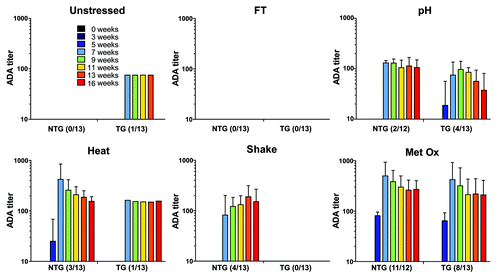Figures & data
Figure 1. Size distribution of unstressed (Unst), freeze-thawed (FT), pH-shifted (pH), heated (Heat), shaken (Shake) and metal-catalyzed oxidized (Metal Ox) IgG formulations: (A) SEC with UV detection at 280 nm; (B) SEC with MALLS detection and the estimated molar mass of each peak; (C) submicron particles (determined by NTA), (D) micron-sized particles (determined by LO).
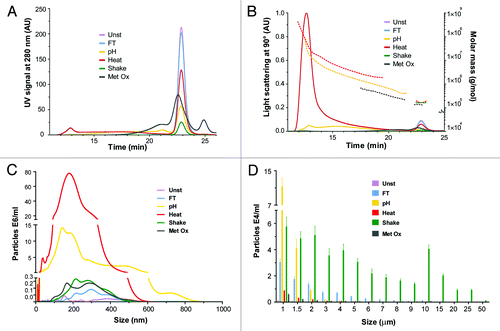
Table 1. AUC percentages from SEC-UV analysis and particles/ml of NTA and LO measurements of unstressed and stressed IgG formulations
Figure 2. Representative microscopy images (20x amplification) of unstressed (Unst), freeze-thawed (FT), pH-shifted (pH), heated (Heat), shaken (Shake) and metal-catalyzed oxidized (Metal Ox) IgG formulations after filtration through a 0.22 μm filter, followed by staining with Coomassie brilliant blue. *The filtered volume used for the shaken formulation was 10 times lower than that for the other formulations due to filter blockage.
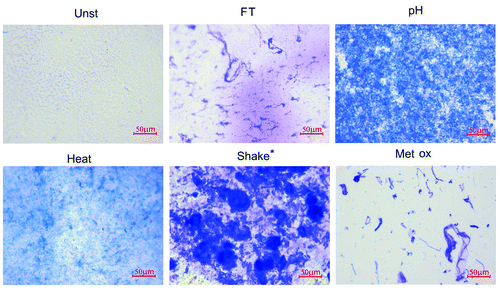
Figure 3. Structural characterization of unstressed (Unst), freeze-thawed (FT), pH-shifted (pH), heated (Heat), shaken (Shake) and metal-catalyzed oxidized (Metal Ox) IgG formulations by (A) far-UV CD, (B) near-UV CD and (C) Bis-ANS fluorescence.
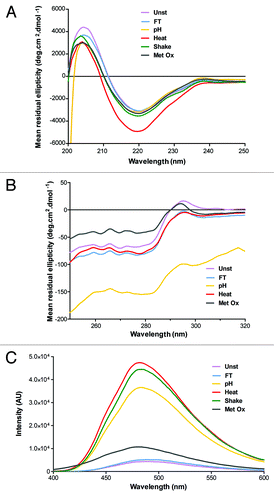
Figure 4. SDS-PAGE gels of unstressed (Unst), freeze-thawed (FT), pH-shifted (pH), heated (Heat), shaken (Shake) and metal-catalyzed oxidized (Metal Ox) IgG formulations stained with Coomassie brilliant blue under (A) non-reducing and (B) reducing conditions. Dot blots of the same formulations detected with (C) monoclonal anti-human κ light chain antibody (D) polyclonal anti-human heavy chain antibody.
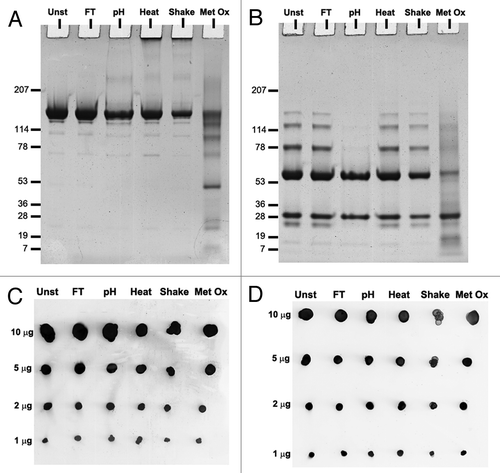
Table 2. Summary of physicochemical characteristics of unstressed and stressed IgG formulations
Figure 5. ADA titers of the sera of non-transgenic (NTG) and transgenic (TG) mice treated with unstressed (Unst), freeze-thawed (FT), pH-shifted (pH), heated (Heat), shaken (Shake) and metal-catalyzed oxidized (Metal Ox) human IgG formulations. Time points before the first injection (week 0), during the injection period (week 3 and 5) and after the last injection (week 7 to 16) are shown. The titers are from responders only and the error bars represent the standard deviation of the mean values.
